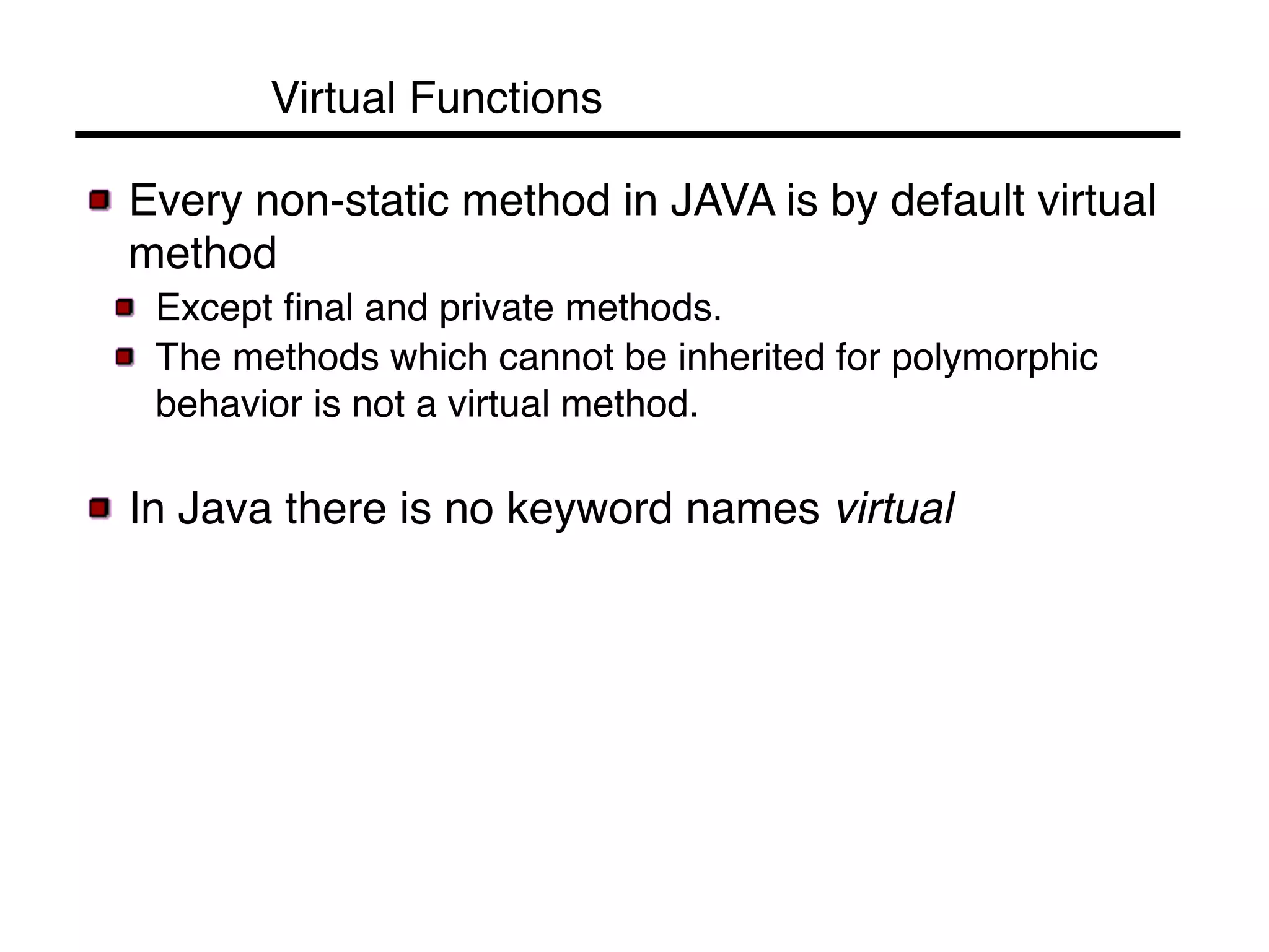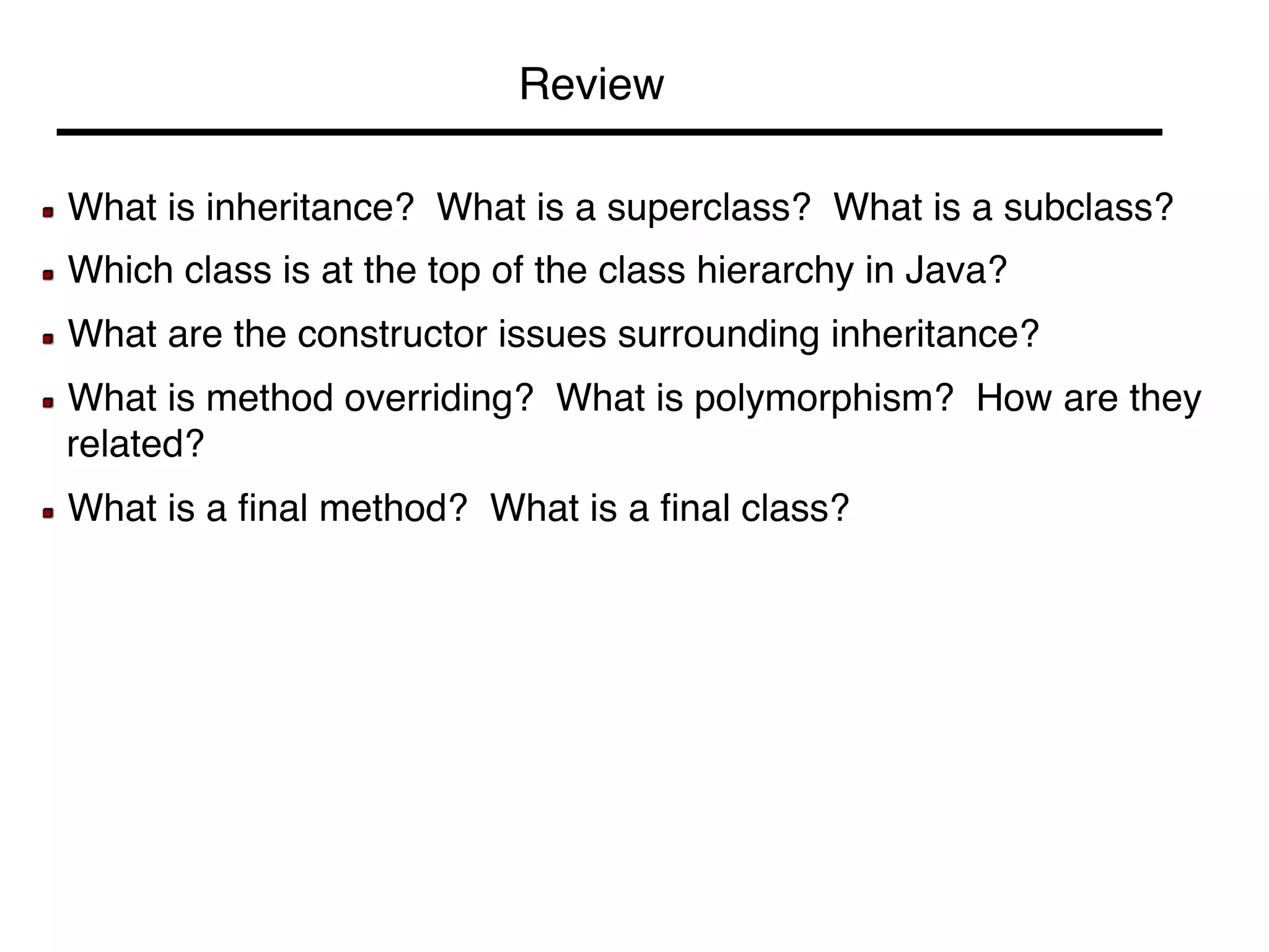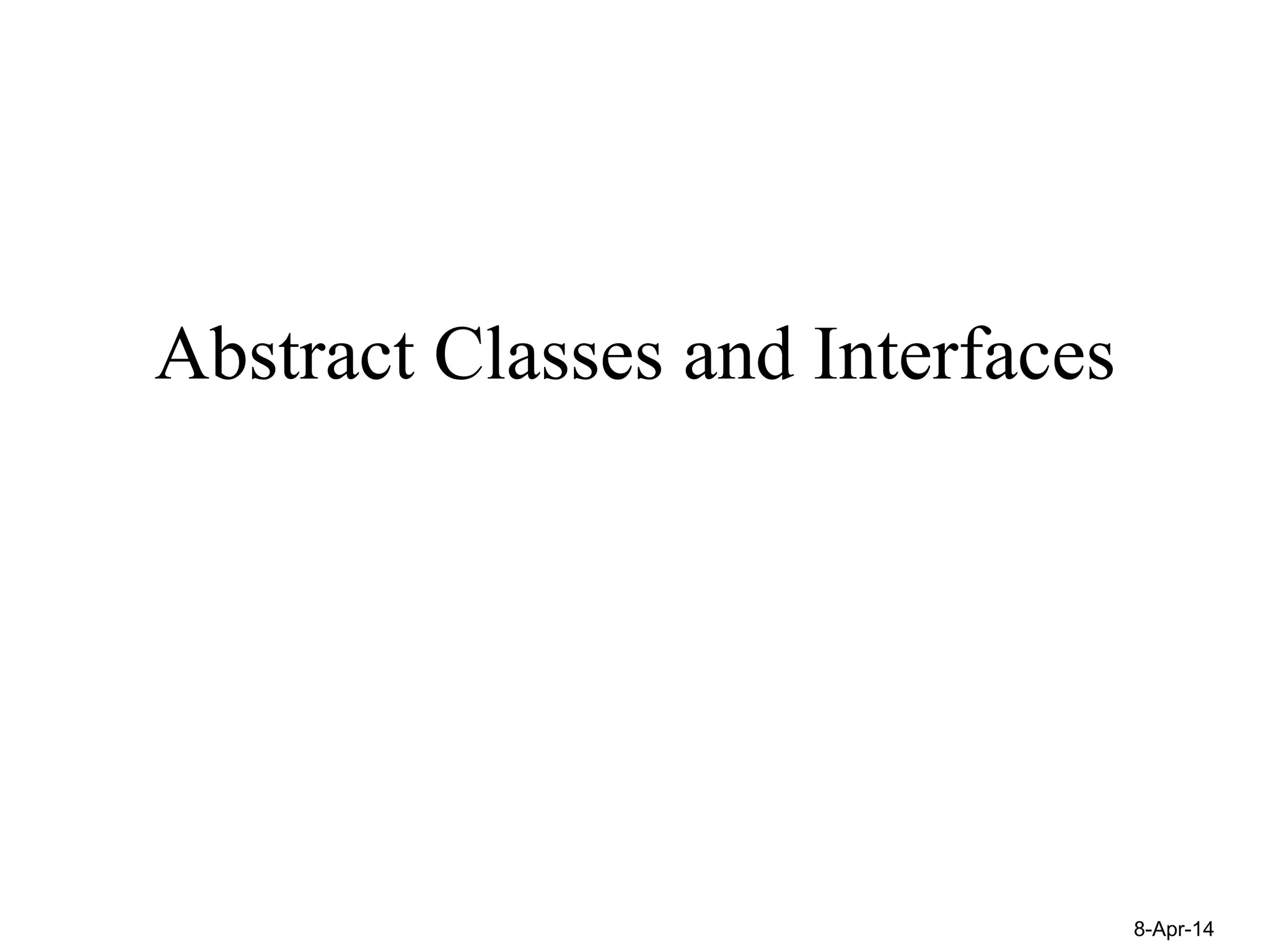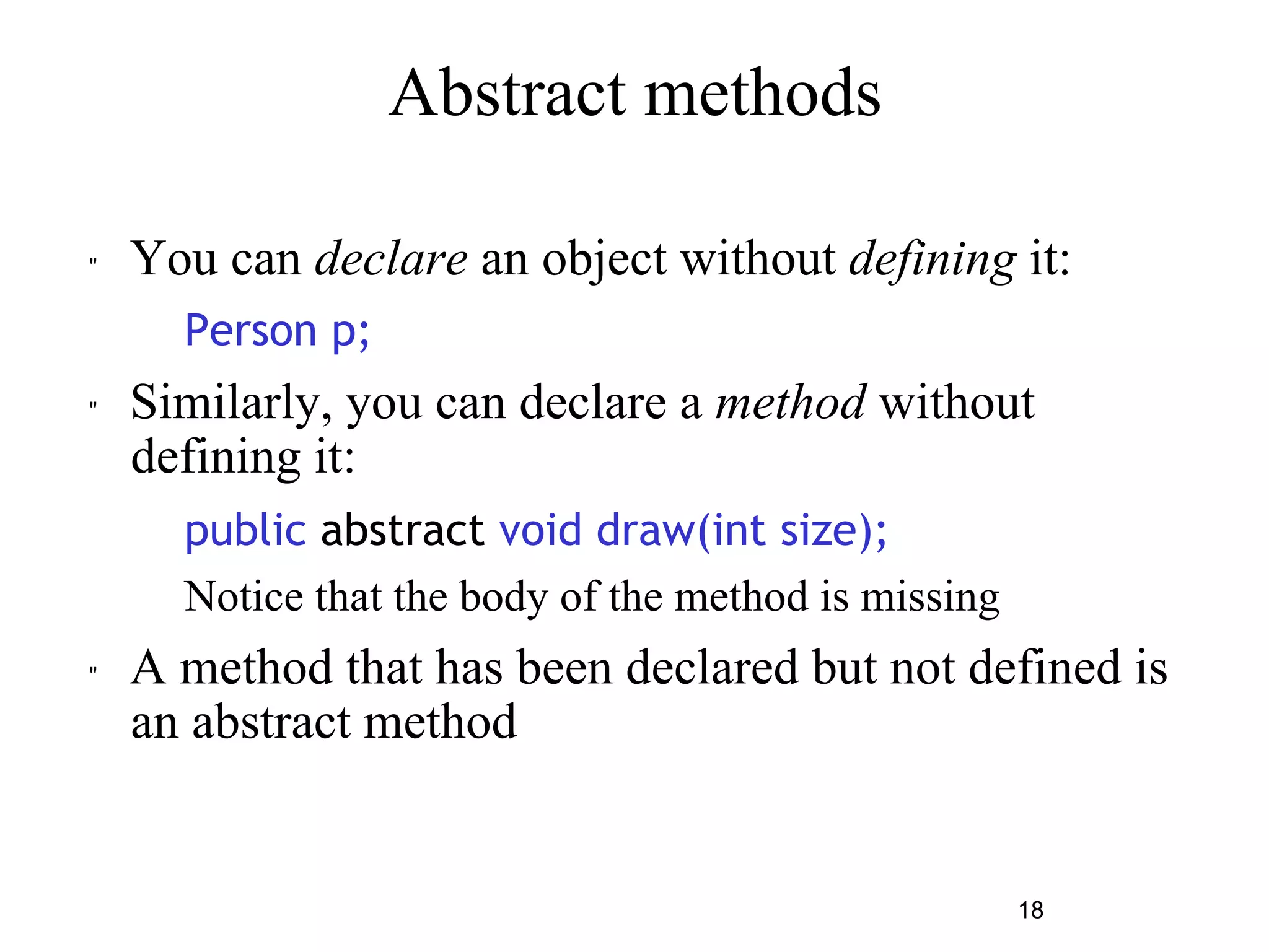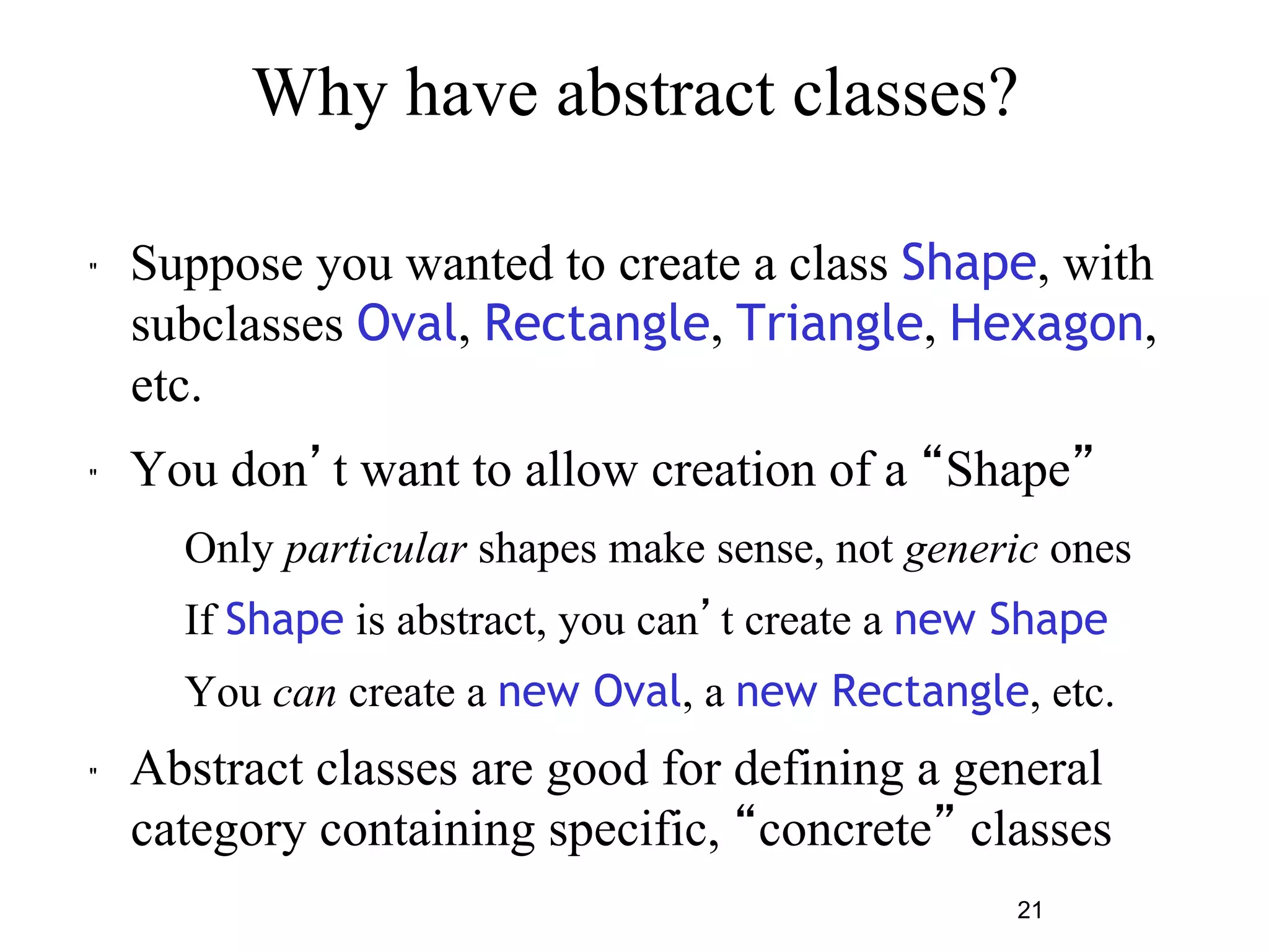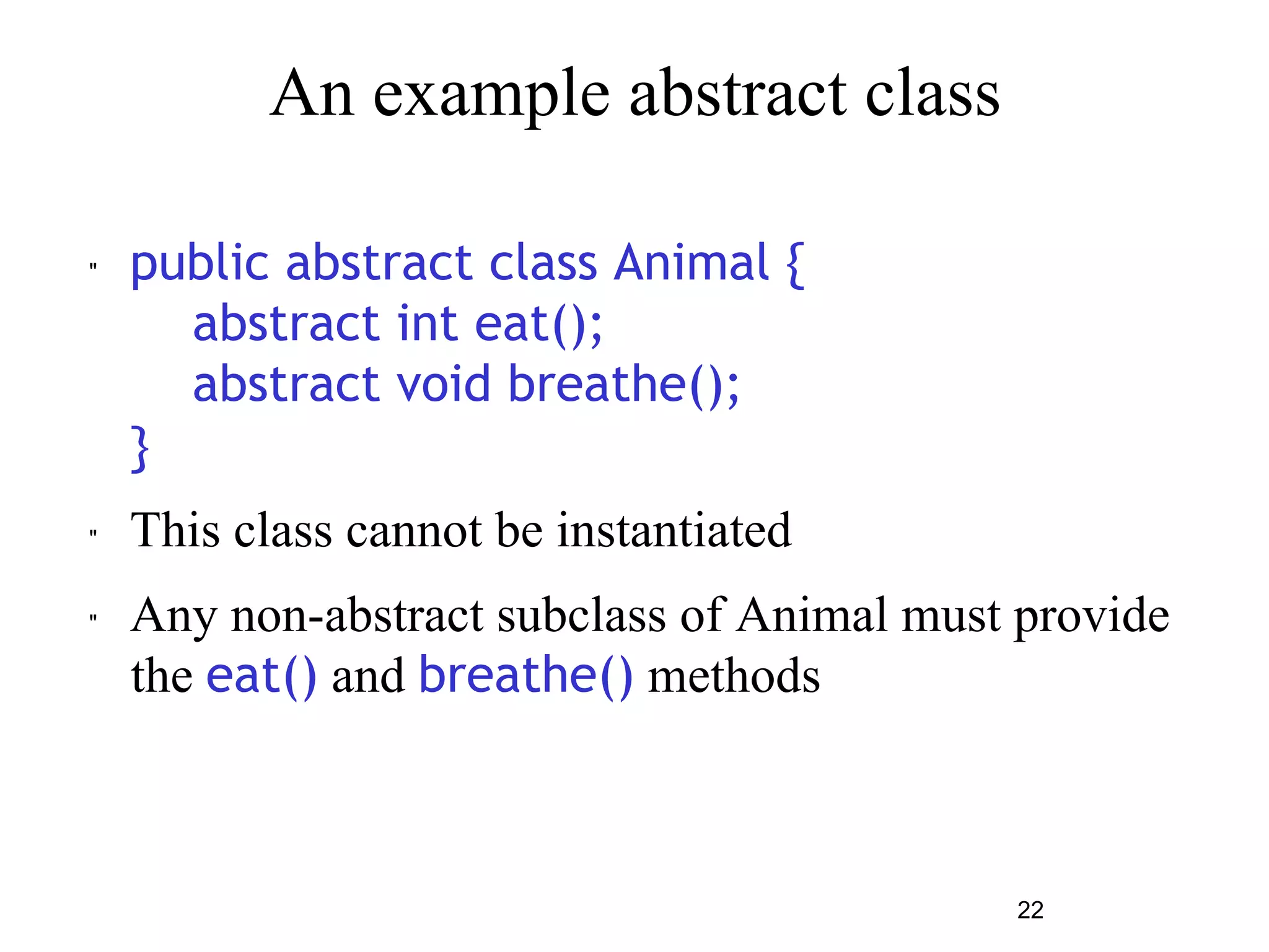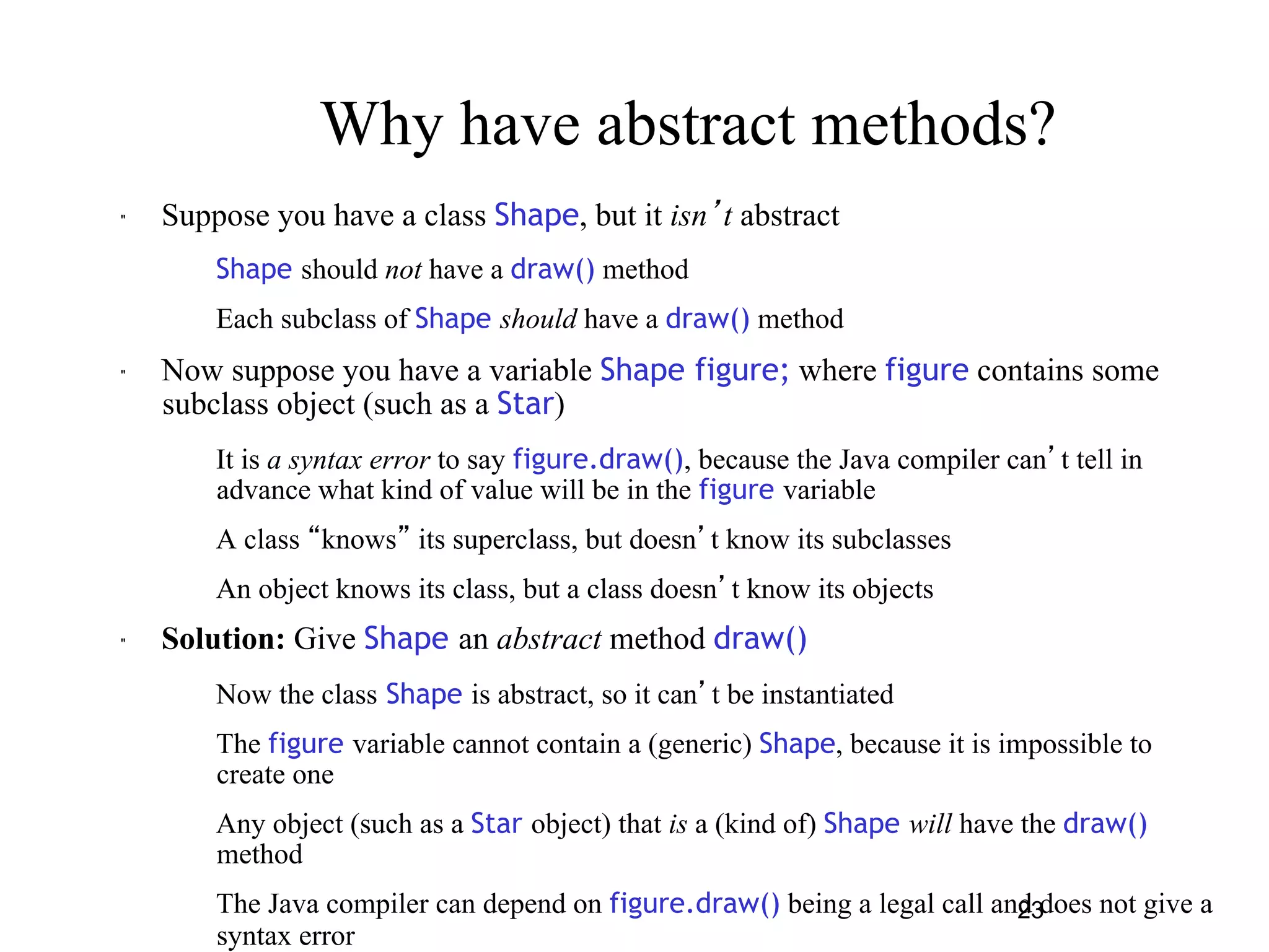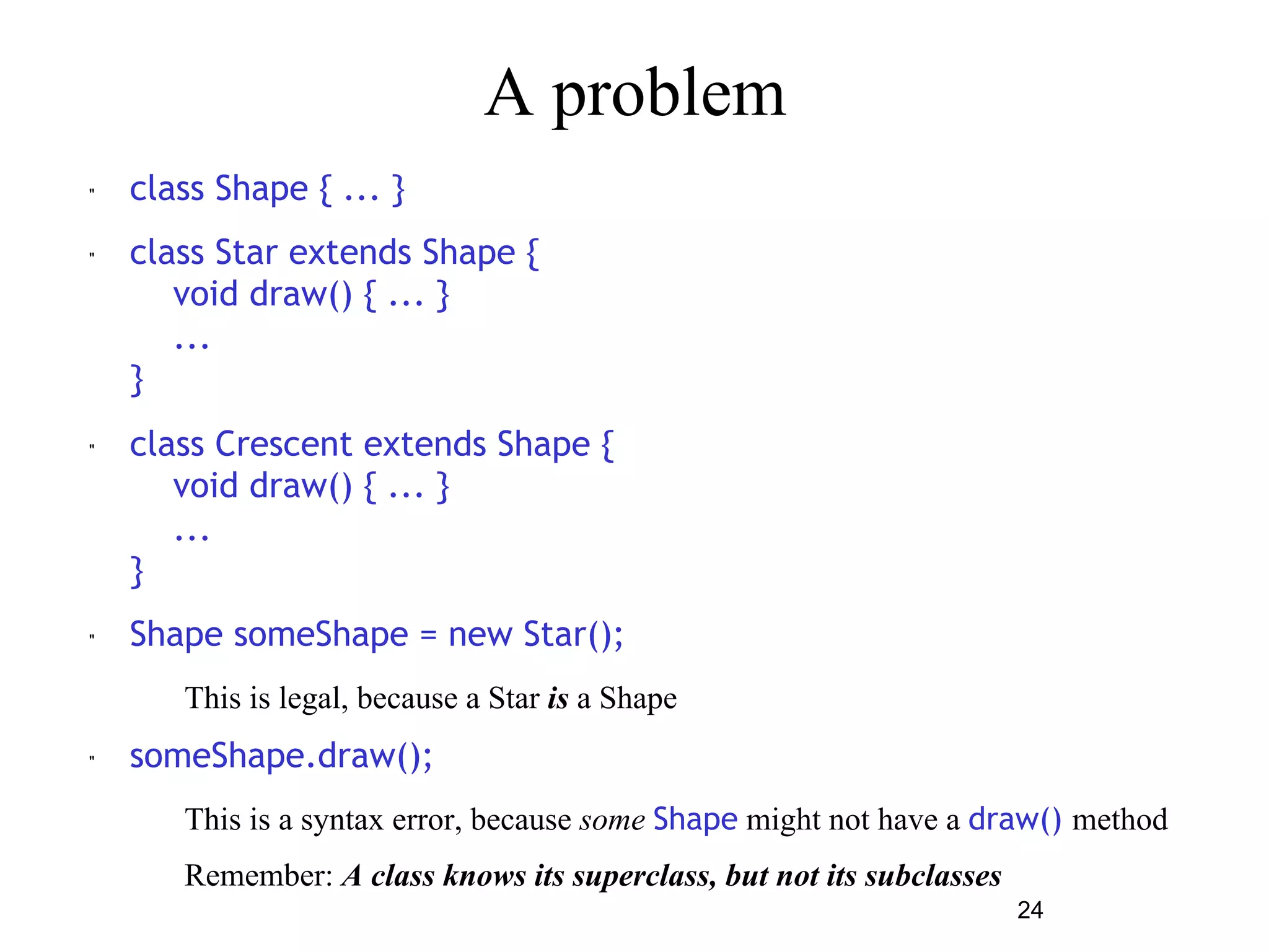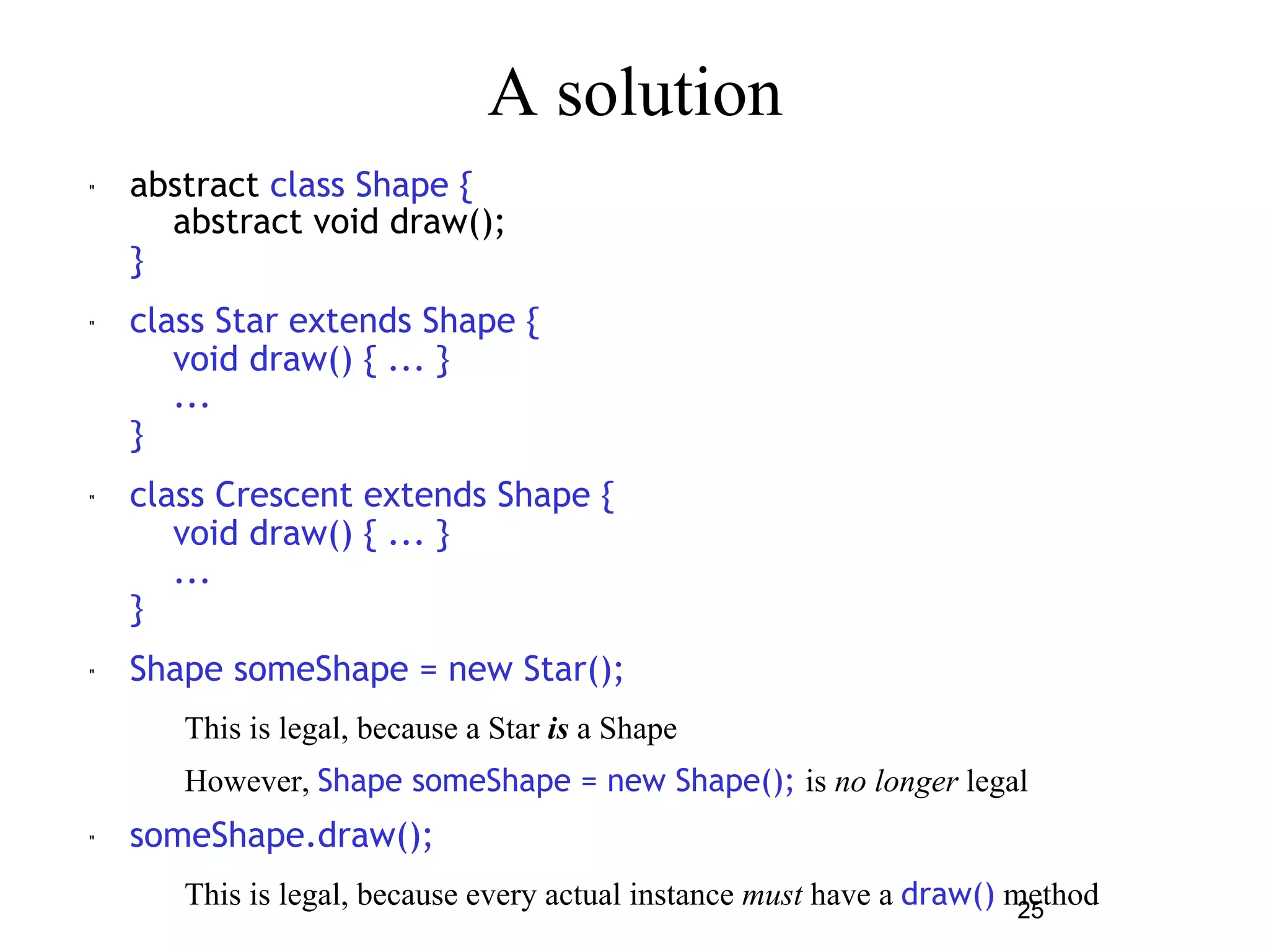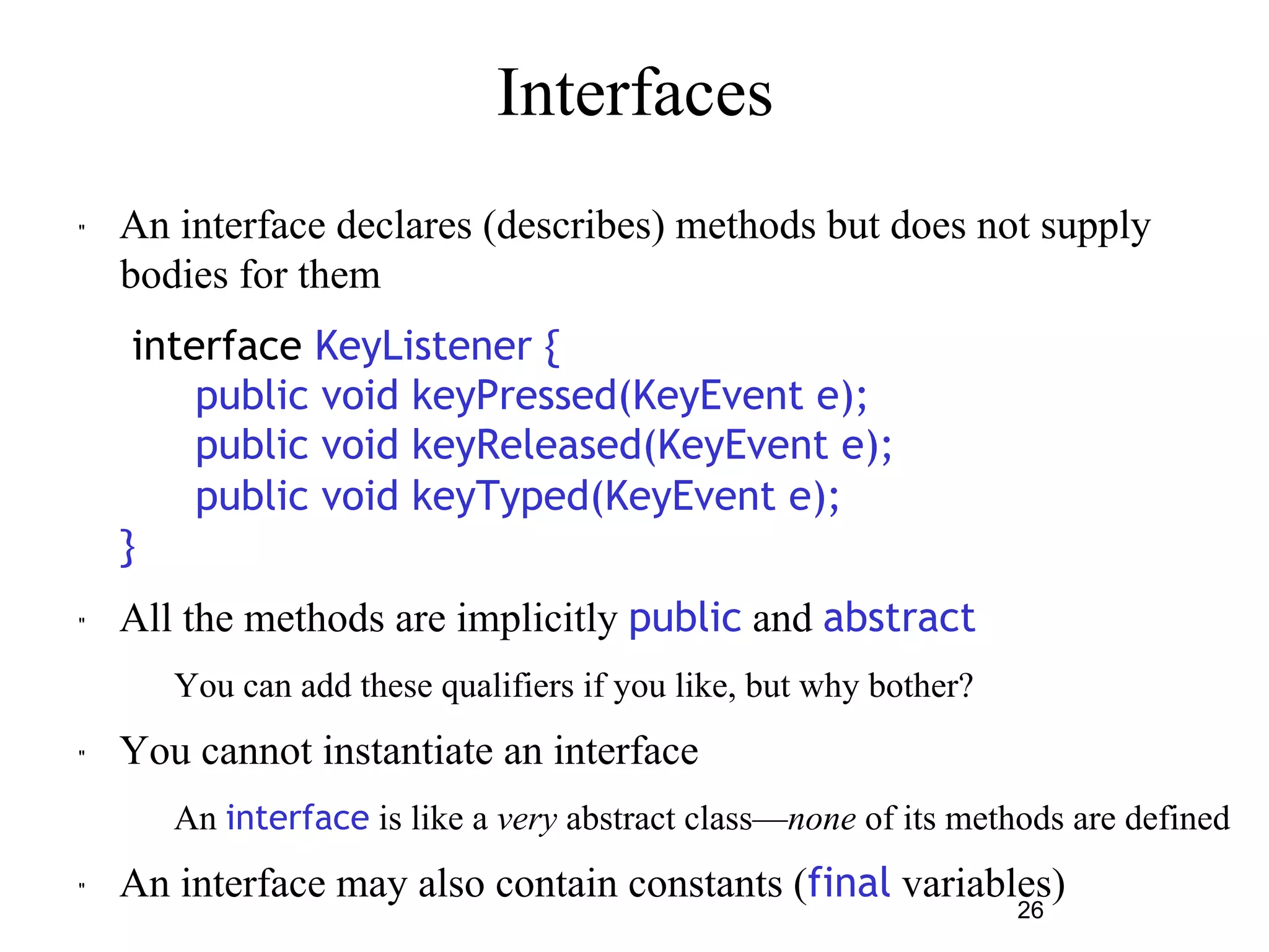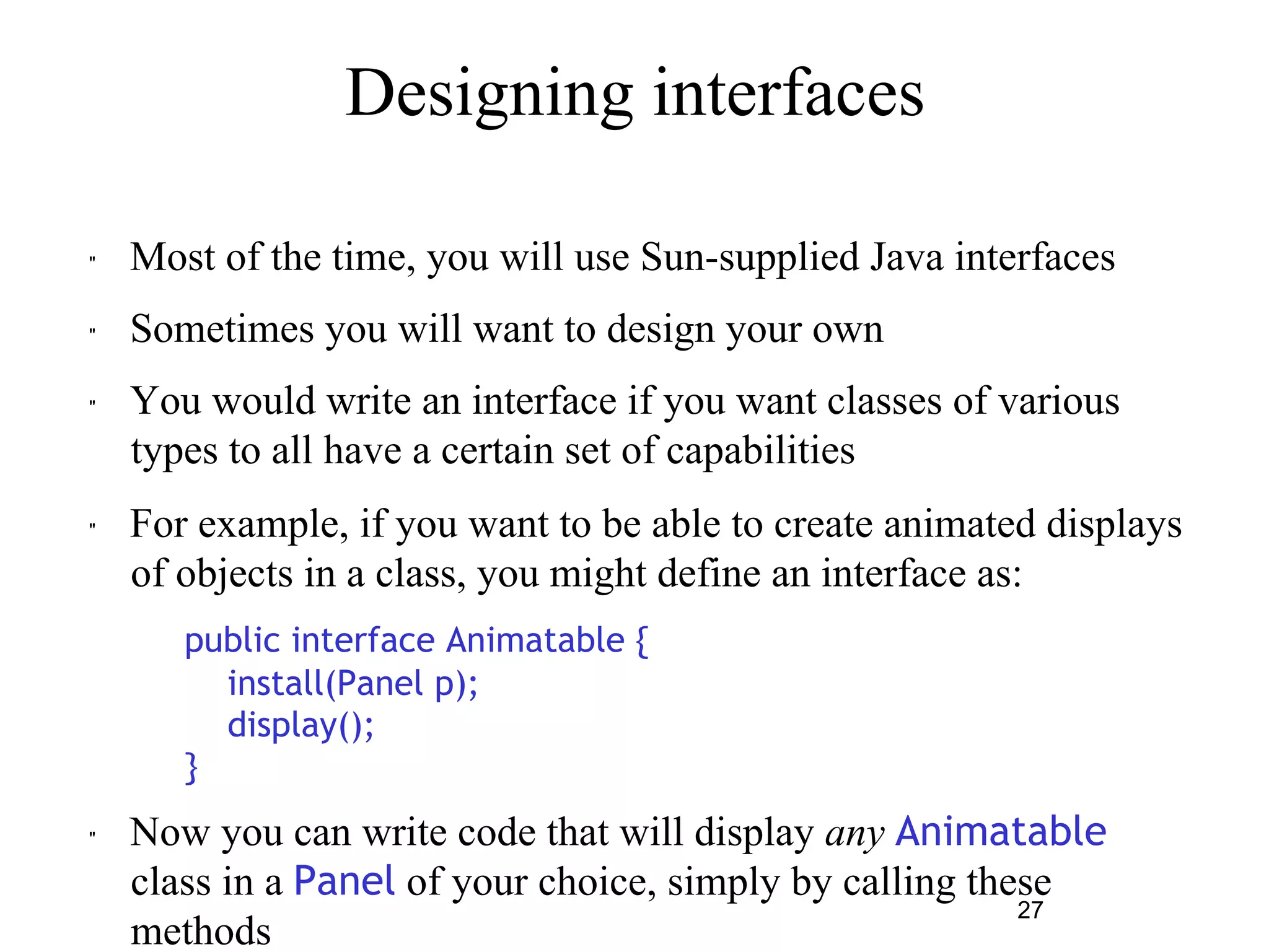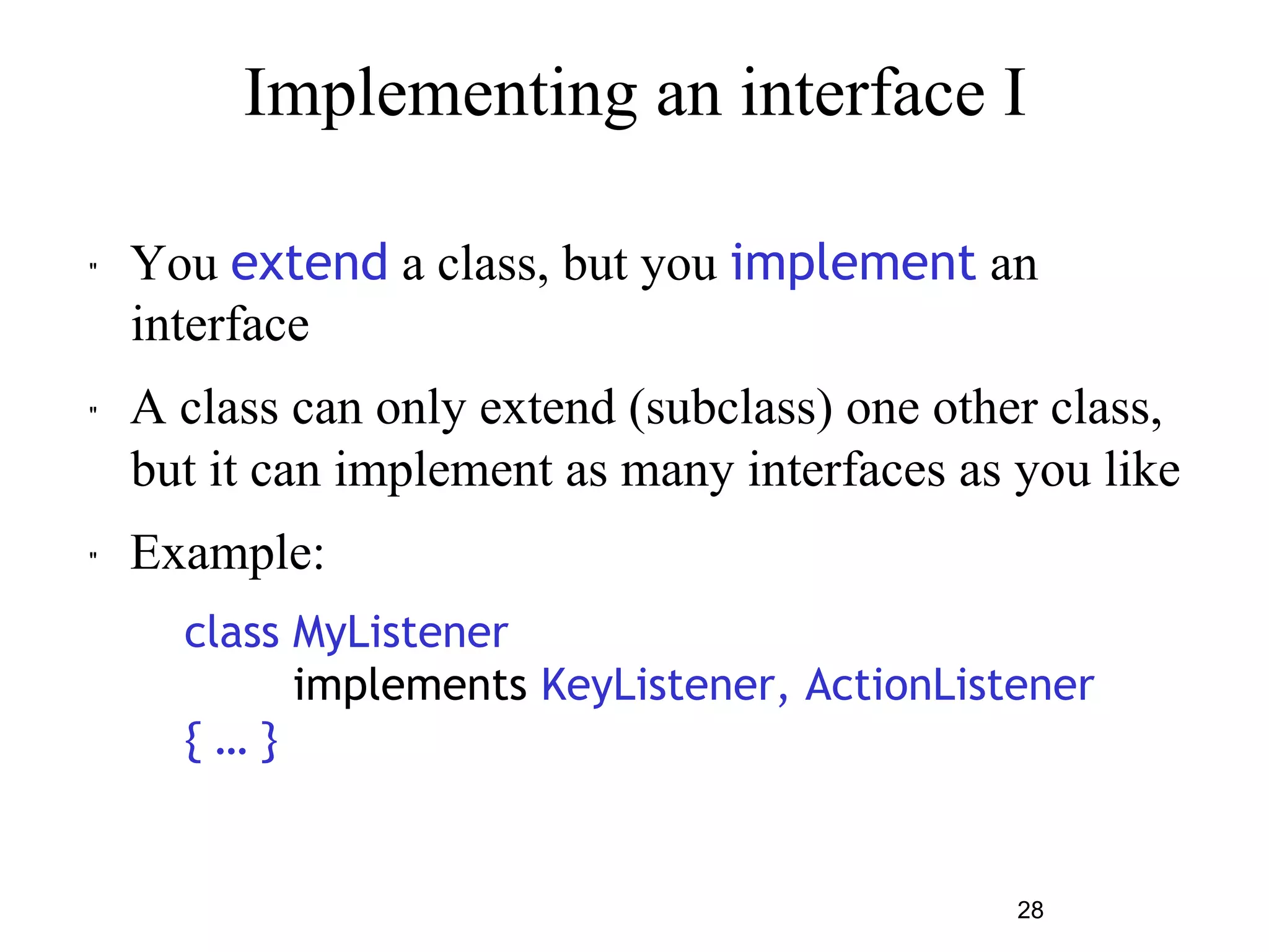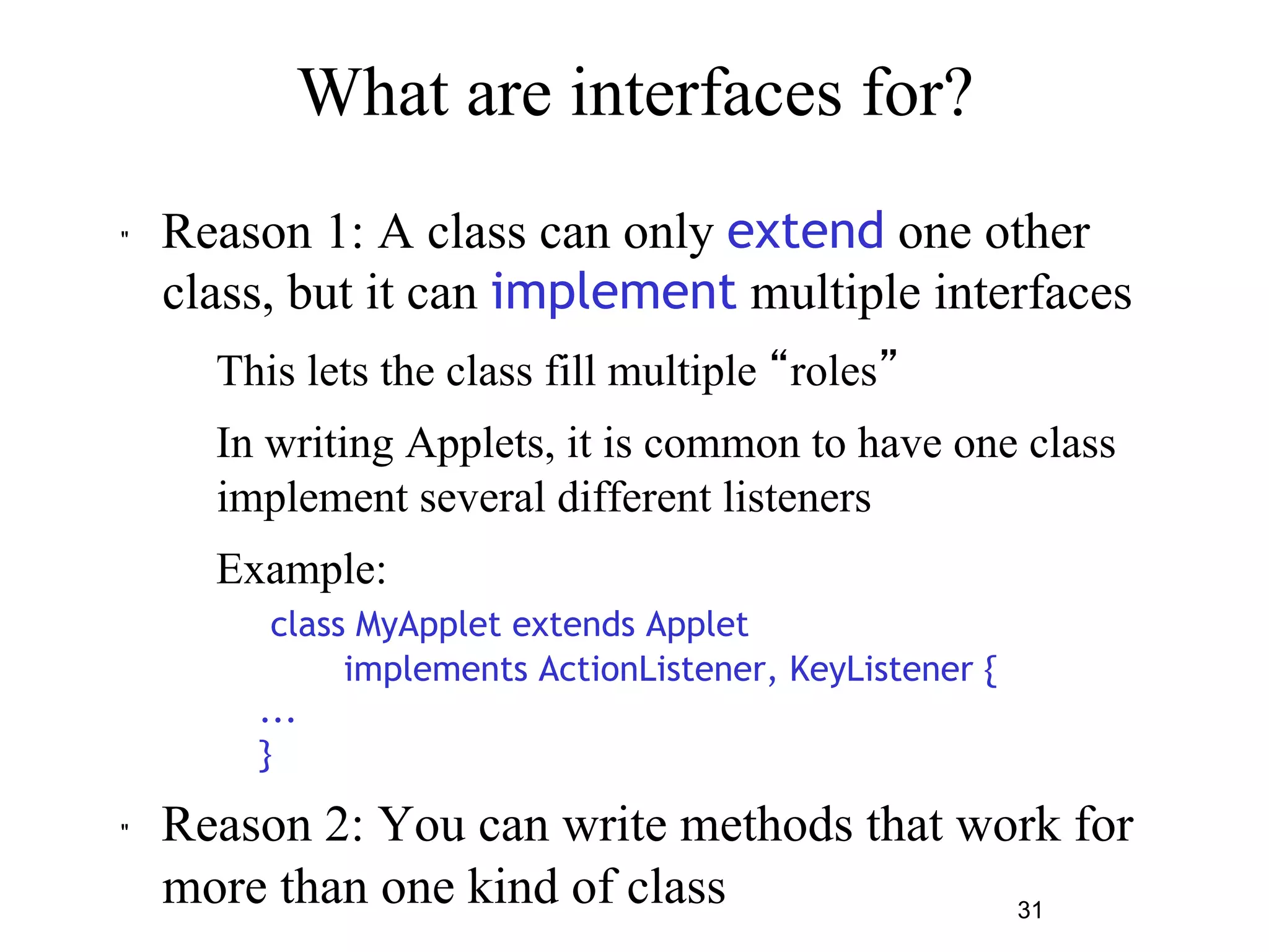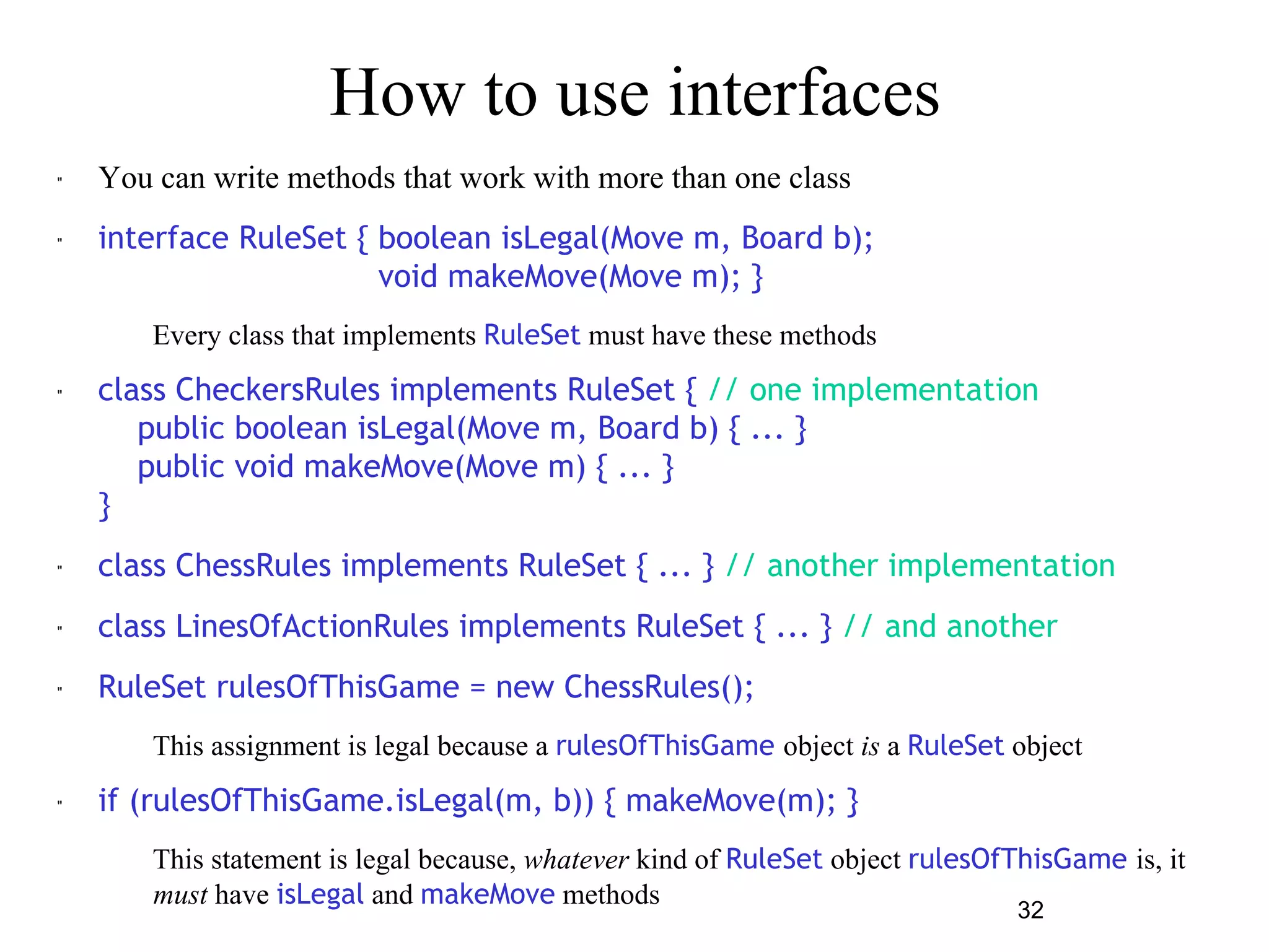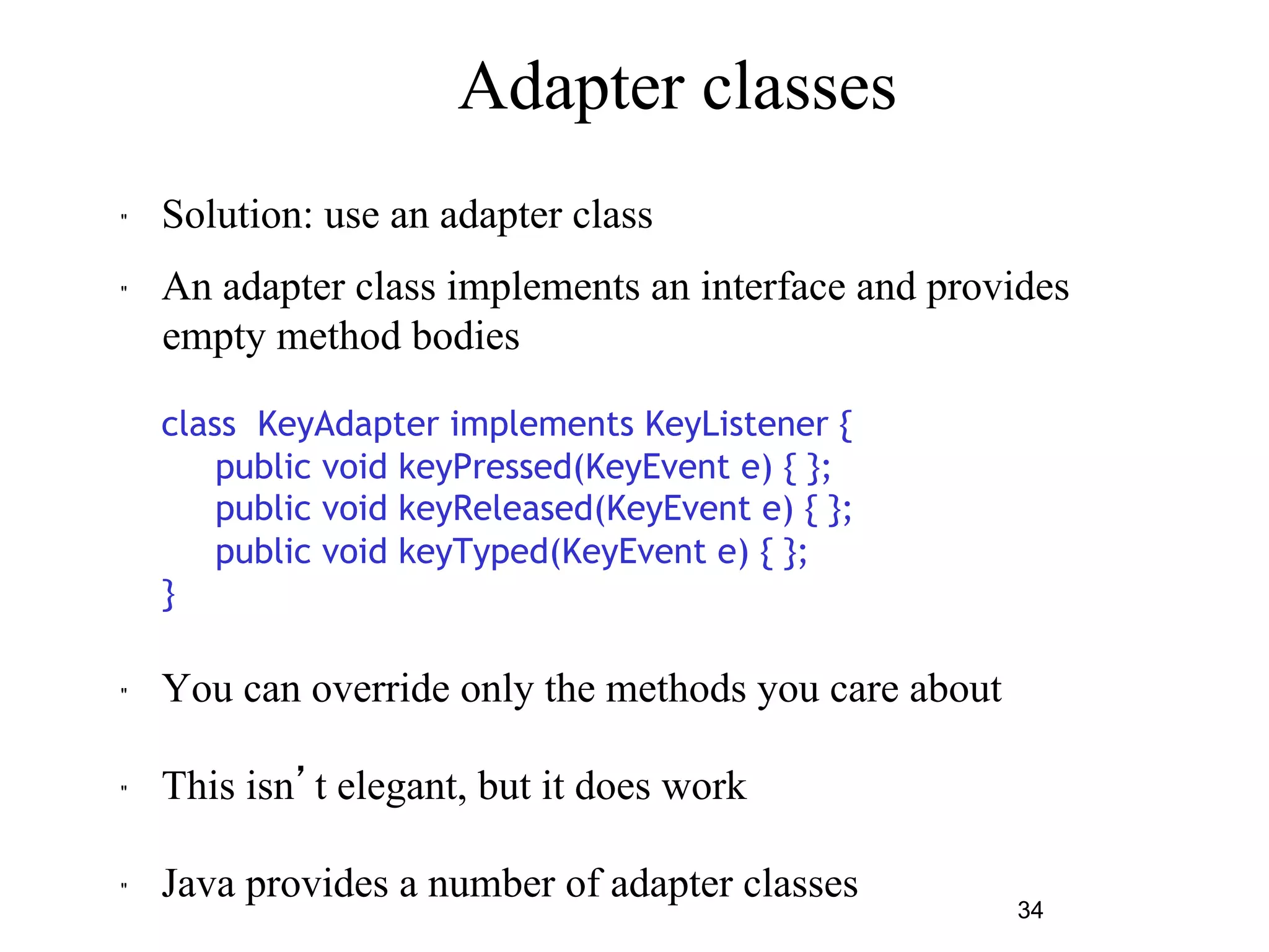The document discusses object-oriented programming concepts related to inheritance in Java, including:
- Inheritance allows a subclass to inherit attributes and behaviors from its superclass. Subclasses can add, use, or override inherited functionality.
- Abstract classes can contain abstract methods that are declared but not defined. Subclasses must define all abstract methods to be instantiated. Abstract classes prevent direct instantiation.
- Polymorphism allows calling the same method on different object types, with the actual implementation determined at runtime based on the object's type. Method overriding in subclasses enables polymorphism.
- Final methods and classes prevent overriding and extension, respectively. This can improve security or performance. All non-static methods are virtual by default
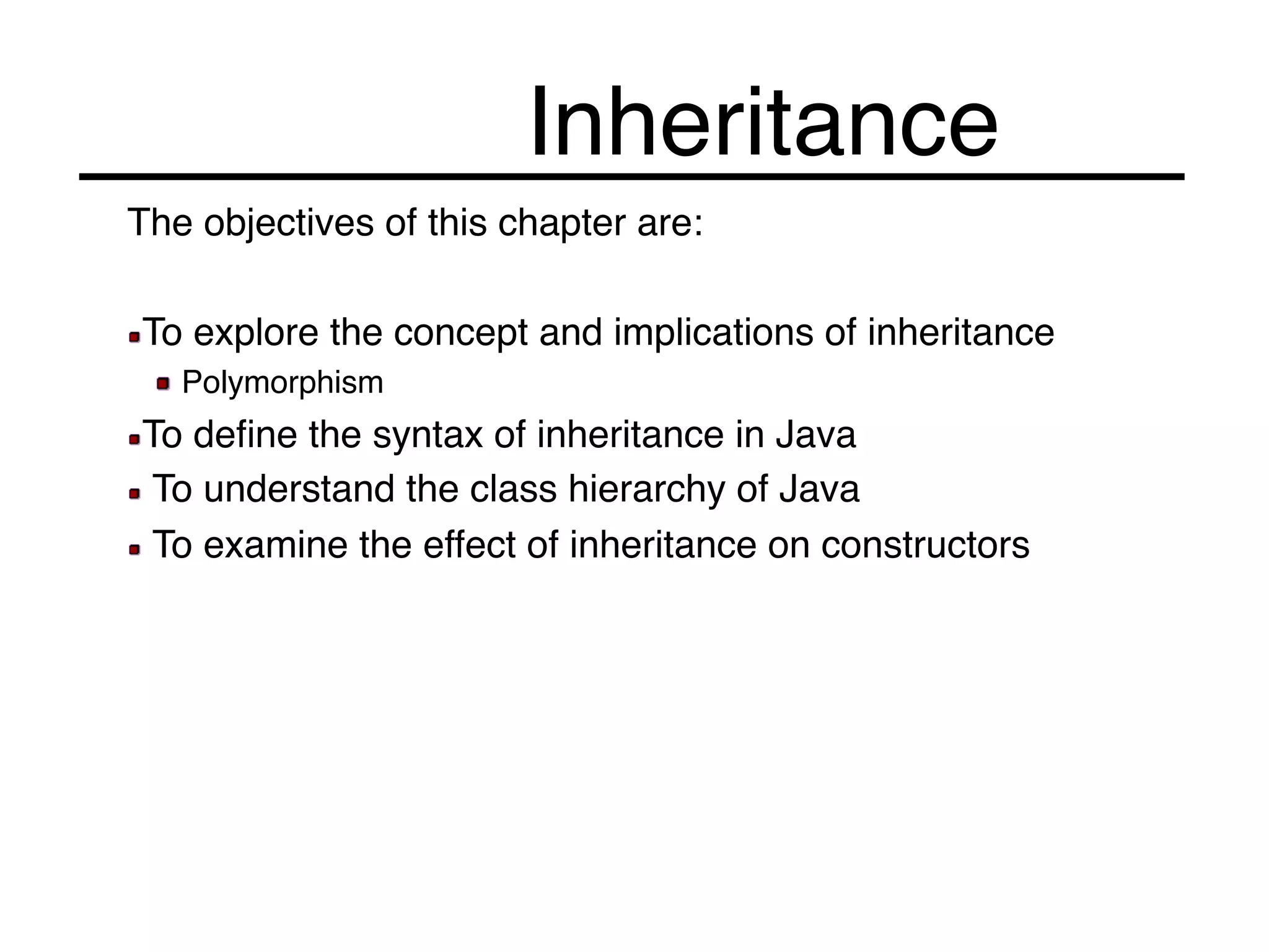
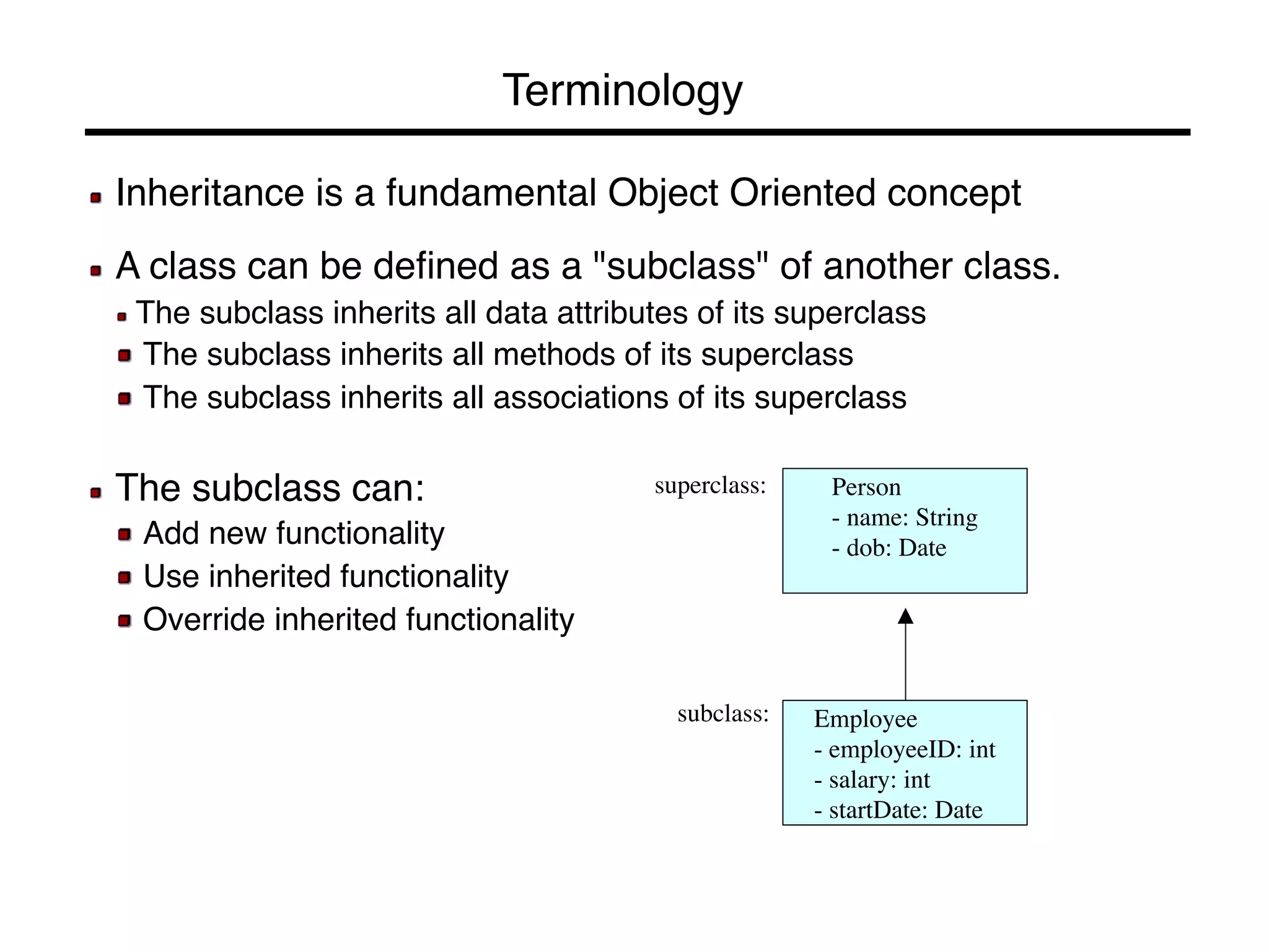
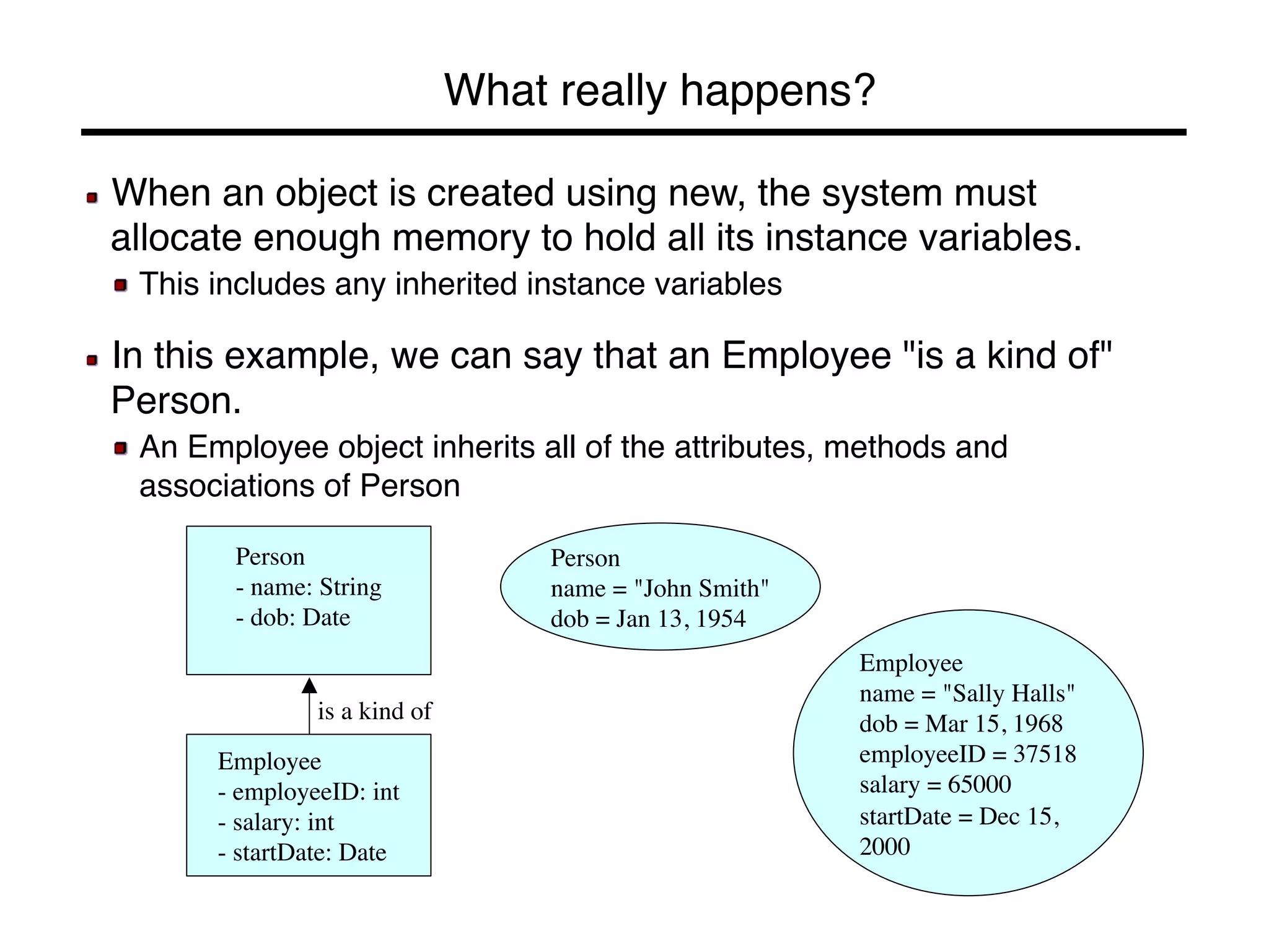
![Inheritance in Java!
! Inheritance is declared using the "extends" keyword!
! If inheritance is not defined, the class extends a class called Object!
!
Person
- name: String
- dob: Date
Employee
- employeeID: int
- salary: int
- startDate: Date
public class Person!
{!
!private String name;!
!private Date dob;!
![...]!
public class Employee extends Person!
{!
!private int employeID;!
!private int salary;!
!private Date startDate;!
![...]!
Employee anEmployee = new Employee();!](https://image.slidesharecdn.com/inheritance-140914051528-phpapp02/75/Inheritance-4-2048.jpg)
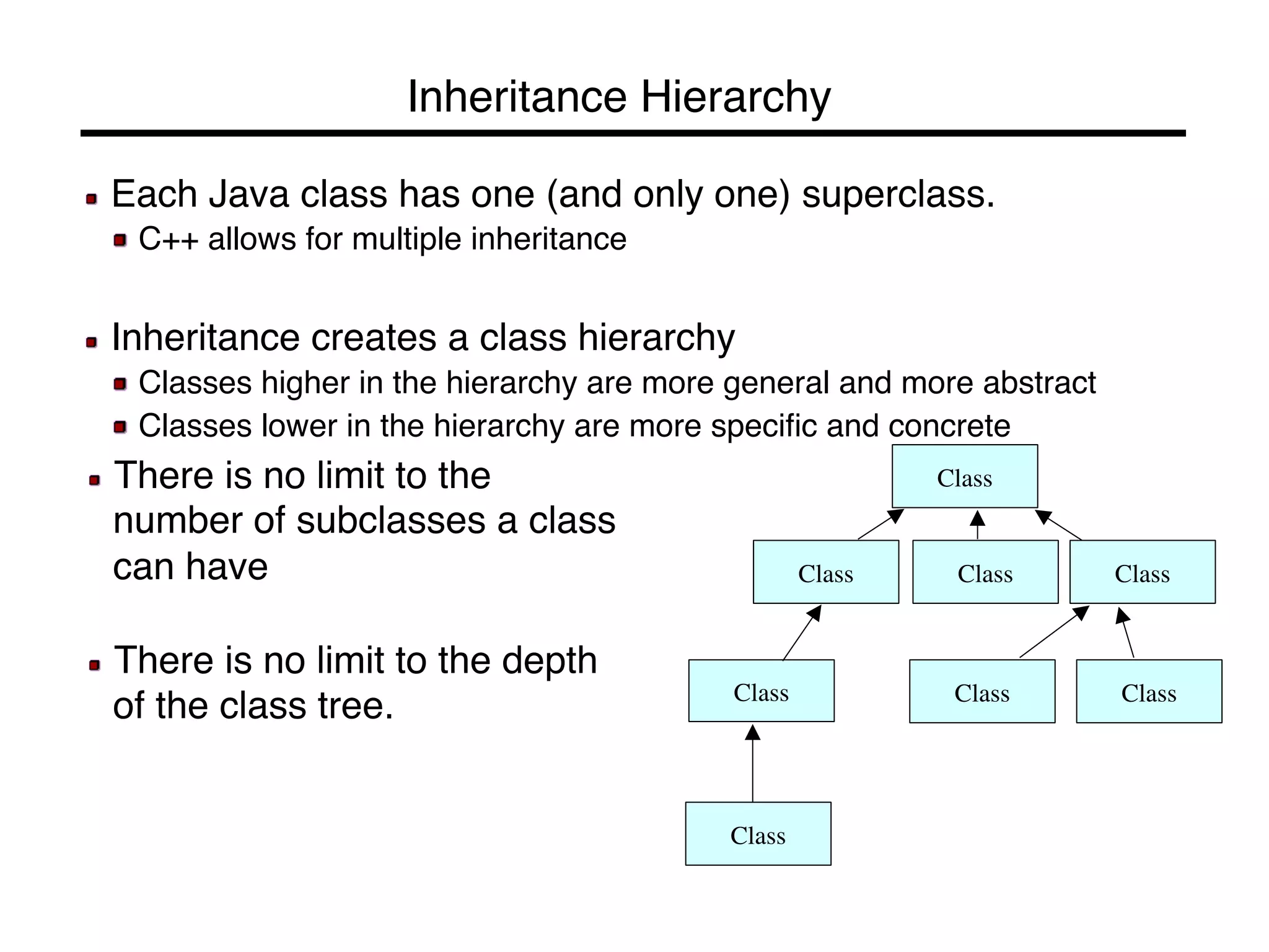

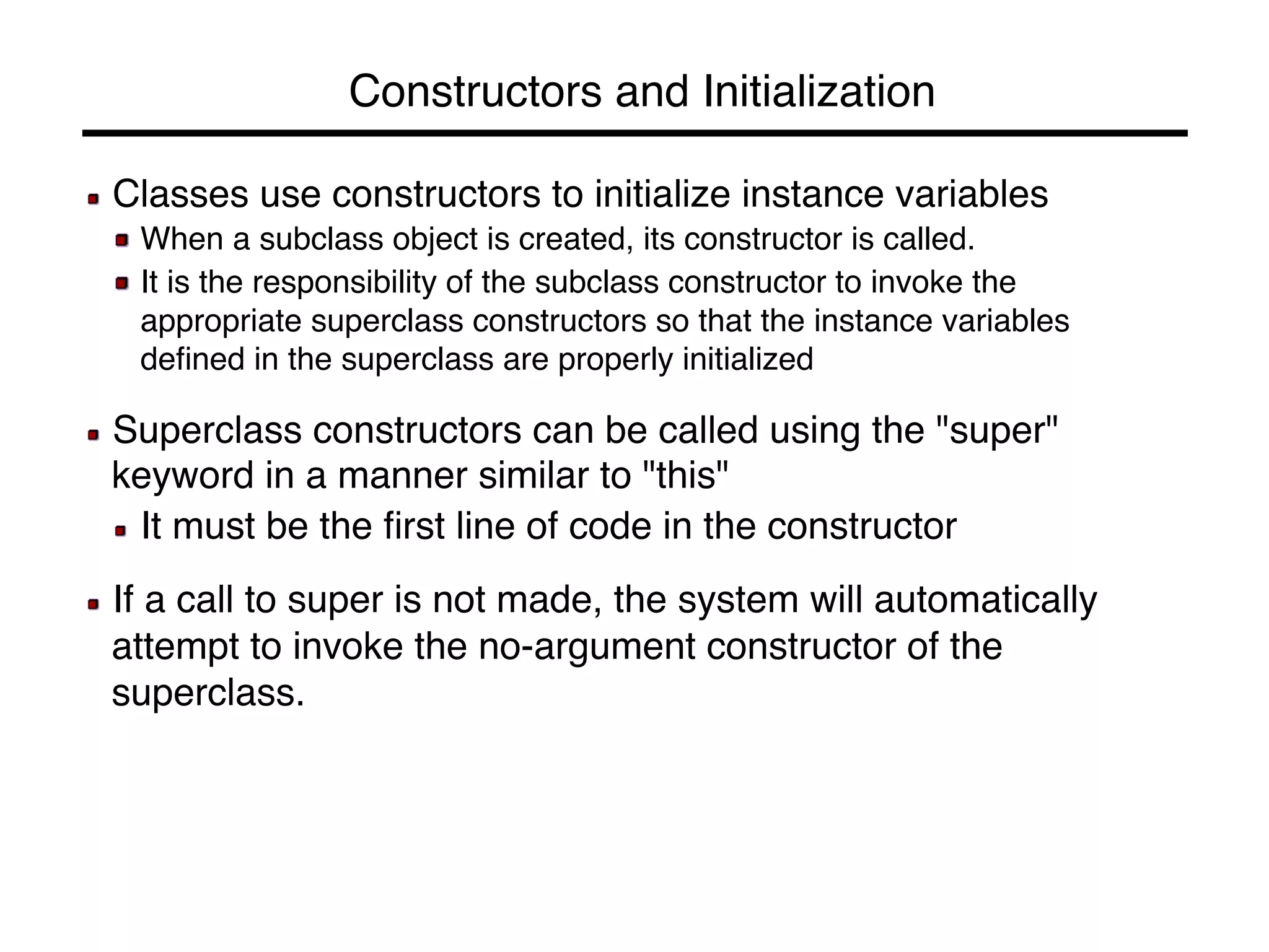
![Constructors - Example!
public class BankAccount!
{!
!private String ownersName;!
!private int accountNumber;!
!private float balance;!
!
!public BankAccount(int anAccountNumber, String aName)!
!{!
! !accountNumber = anAccountNumber;!
! !ownersName = aName;!
!}!
![...]!
}!
!
public class OverdraftAccount extends BankAccount!
{!
!private float overdraftLimit;!
!
!public OverdraftAccount(int anAccountNumber, String aName, float aLimit)!
!{!
! !super(anAccountNumber, aName);!
! !overdraftLimit = aLimit;!
!}!
}!](https://image.slidesharecdn.com/inheritance-140914051528-phpapp02/75/Inheritance-8-2048.jpg)

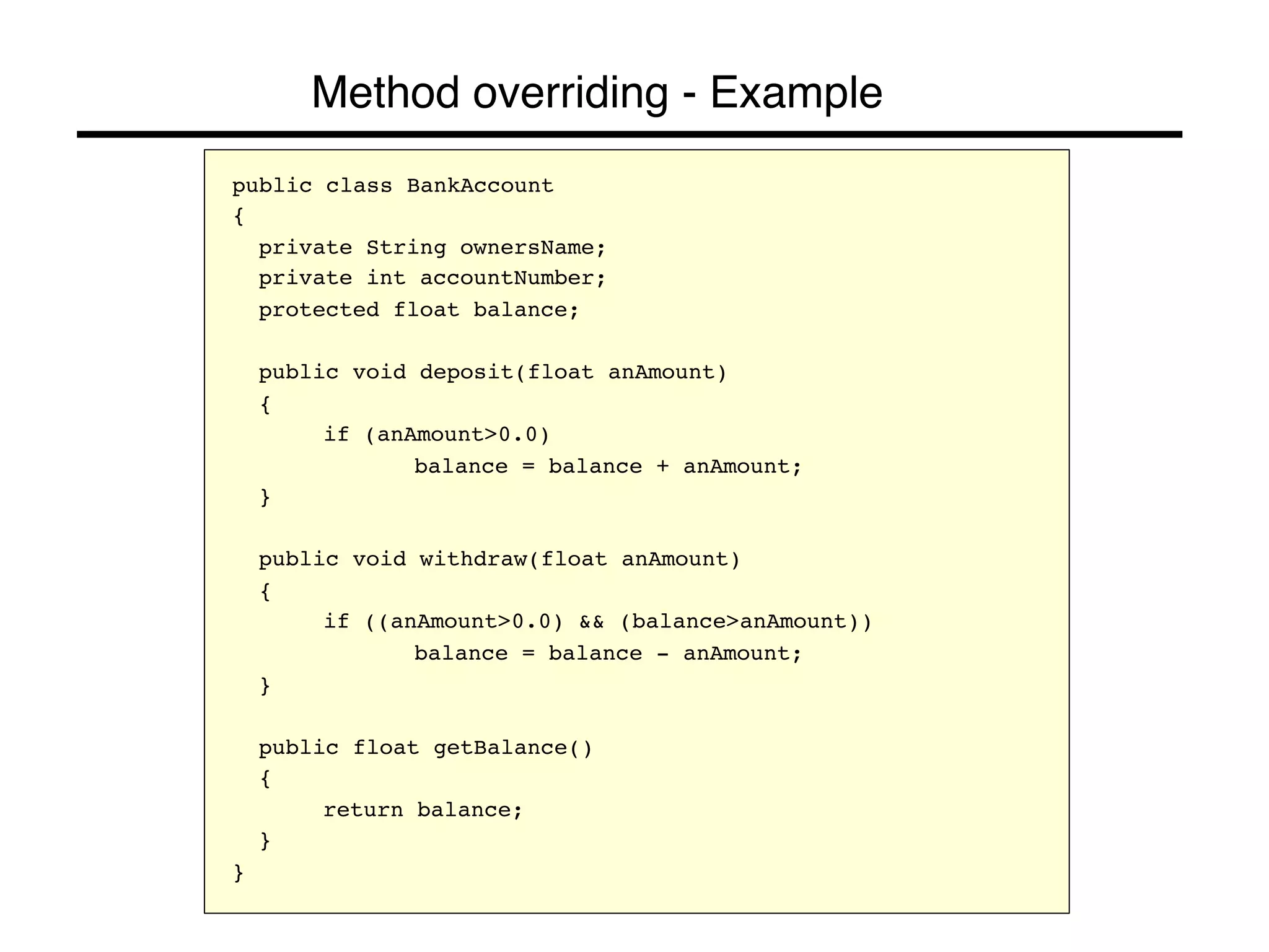
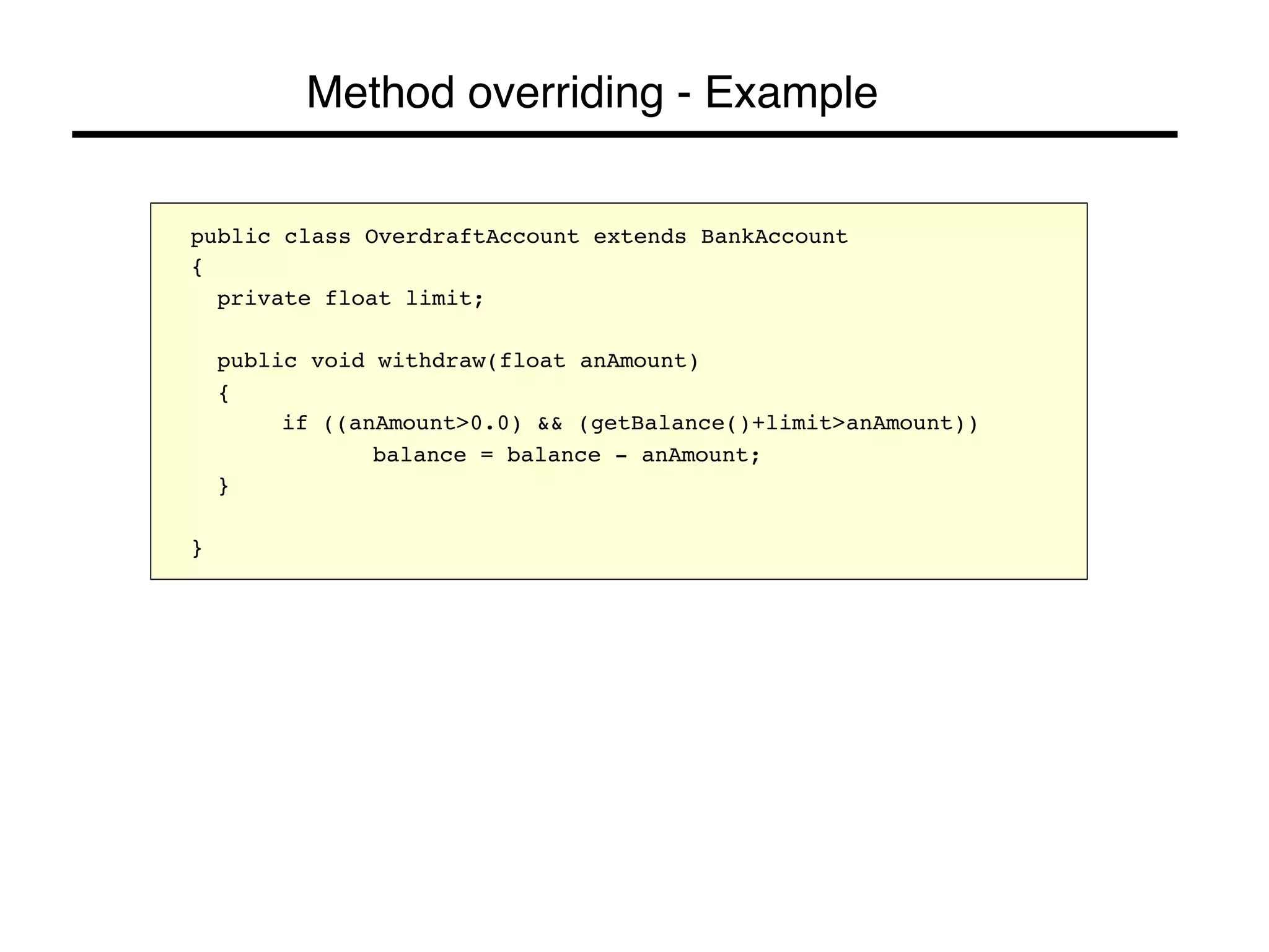
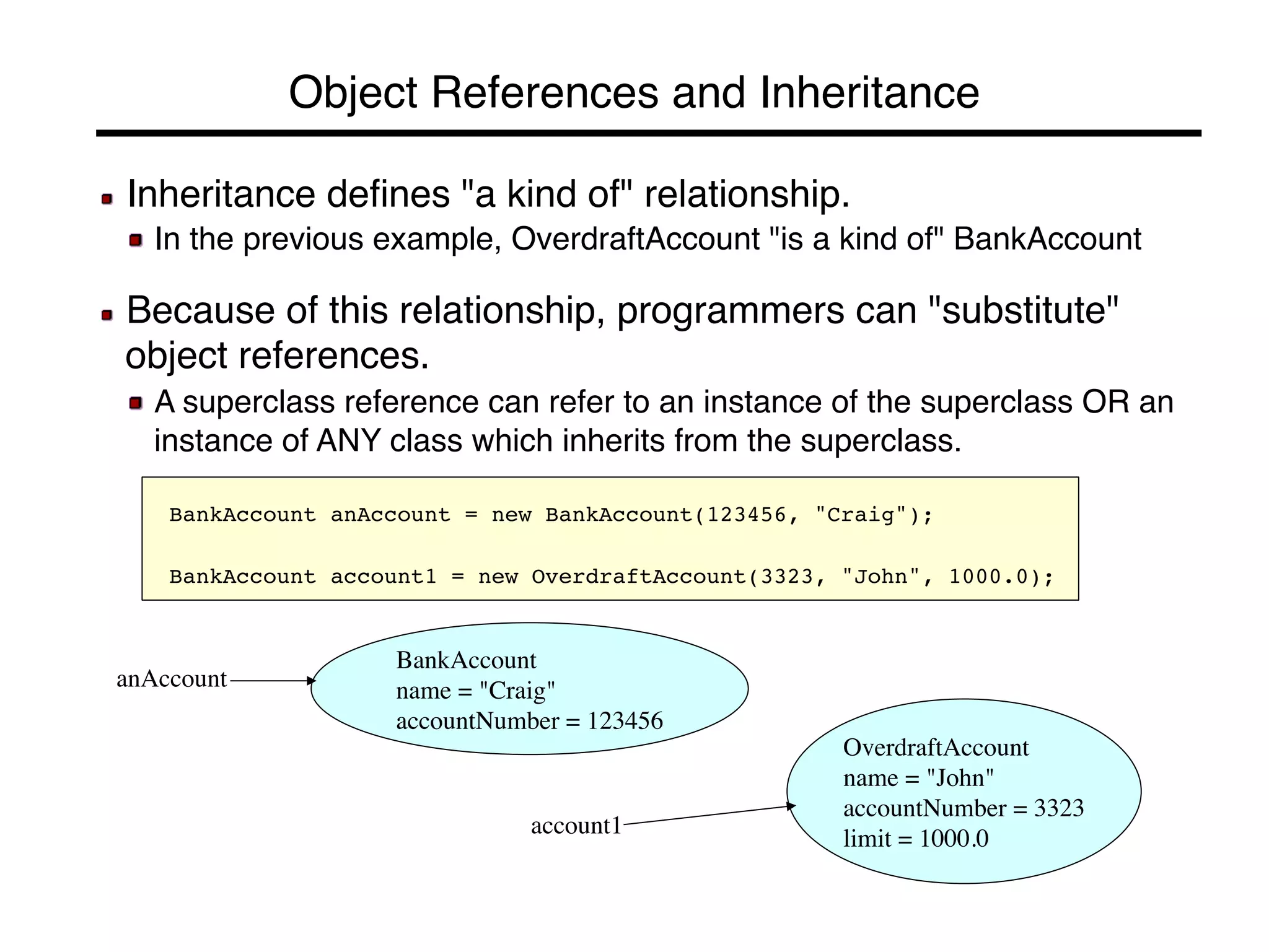
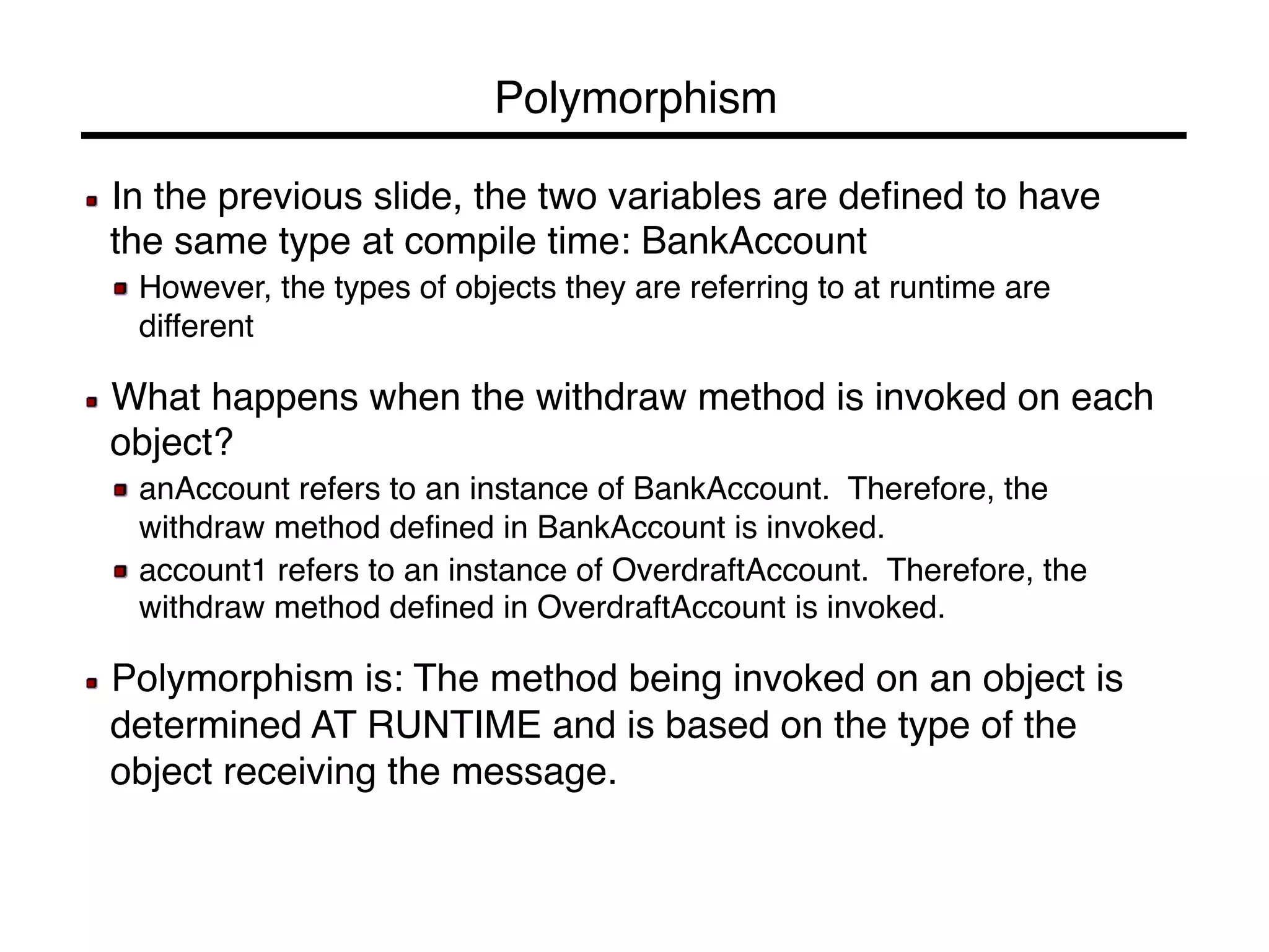
![Final Methods and Final Classes!
! Methods can be qualified with the final modifier!
! Final methods cannot be overridden.!
! This can be useful for security purposes.!
public final boolean validatePassword(String username, String Password)!
{!
![...]!
! Classes can be qualified with the final modifier!
! The class cannot be extended!
! This can be used to improve performance. Because there an be no
subclasses, there will be no polymorphic overhead at runtime.!
public final class Color!
{!
![...]!](https://image.slidesharecdn.com/inheritance-140914051528-phpapp02/75/Inheritance-14-2048.jpg)
